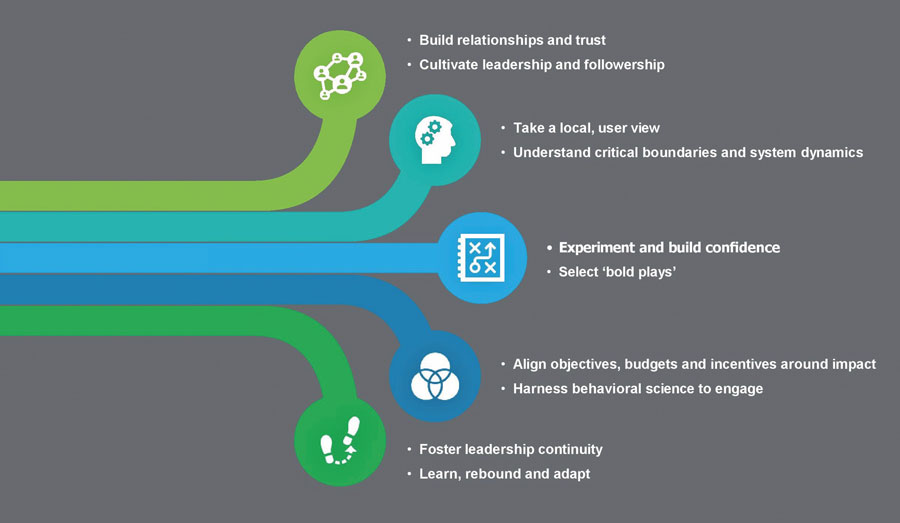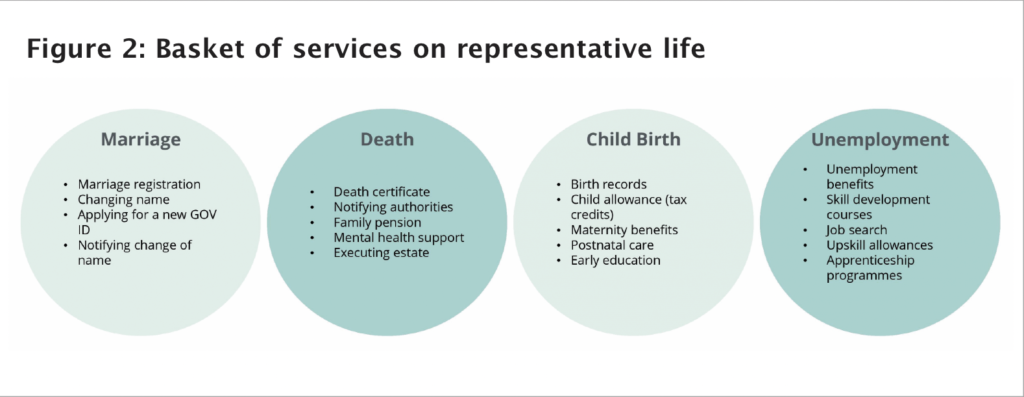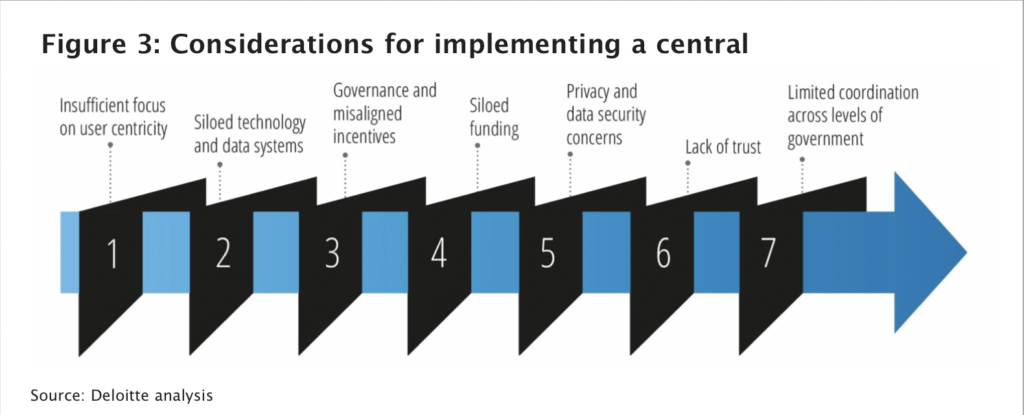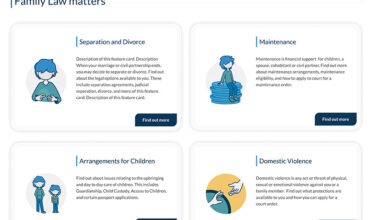The future of justice: Interconnectedness and a whole-system approach to justice

The pandemic showed how government can help speed up innovation in every area and underlined the necessity for interconnectedness across government agencies. The question now facing justice leaders is how they can do more than simply improve existing processes to transform outcomes for citizens, Shane Mohan, Partner and Head of Government and Public Services at Deloitte.
-The response to the pandemic has given leaders a real sense of what is possible when they work together across government organisations. A whole-system approach to sustained transformation across the justice sector would help to future proof the system against ever-evolving challenges. To reshape the future of justice, it is vital to understand not only the justice context today and in the coming months, but the world it will be operating in five, 10 and even 20 years’ time. Little is known for certain. As shown by recent geopolitical events, predicting the state of the world is more difficult today than ever before.
Breaking down silos
The importance of shared goals across government is becoming more evident as many justice organisations are progressing their transformational journeys. While many organisations across the sector have commenced their change programmes, their strategic plans consider change from primarily their perspective, rather than the overall system. Organisations tend to focus on the service they provide rather than taking a cross-agency service design approach. Considering an end-to-end process for the user would generally result in a better overall experience. A whole-system approach to consider the full user experience, rather than its individual components, would allow for greater efficiencies and an enhanced user experience in the long term.

Progress requires innovation beyond functional and administrative levels within an organisation. For the justice sector, breaking down silos to develop a shared understanding of the benefits from the exchange of knowledge and perspectives is key to successful large-scale transformation for the sector as a whole. Organisations including the Department of Justice, the Courts Service, An Garda Síochána, the Irish Prison Service, and the Probation Service are all working towards common goals such as:
- tackling crime and enhancing national security;
- improving access to justice and modernising our courts service;
- strengthening community safety; and
- promoting justice, equality and safeguarding human rights.
An example of a whole-system approach in Ireland is the Criminal Justice Sectoral Strategy 2022-2024. The key objective of this strategy is to develop a shared vision for a more “joined-up criminal justice system” with increased data-sharing between agencies a priority that is being led by the Criminal Justice Operational Hub. Some of the key projects already underway include the sharing of charge sheet data from An Garda Síochána, court lists and court orders from the Courts Service with other agencies.
This strategy was drafted by the Criminal Justice Strategic Committee in light of consultations that suggested the criminal justice system was “daunting, inaccessible, and often difficult to understand”. This committee is made up of the Department of Justice, An Garda Síochána, the Office of the Director of Public Prosecutions, the Courts Service, Forensic Science Ireland, the Irish Prison Service, the Legal Aid Board, and the Probation Service, and highlights how internal collaboration can be fostered locally with a coordinated multi-agency response.
Adopting a whole-system approach
Despite the understanding of the need for adopting a whole-system approach to justice, it is intensely challenging. Adversarial legal traditions, legal separation of powers, distinct professional identities, and specific organisational structures and processes were all developed for good reasons and these traditional values remain omnipresent in the justice system in Ireland today.
To combat barriers to change and to foster collaboration, our experience suggests that several critical steps are required (Figure 1). This five-ingredient framework outlines how coordinated action across the whole justice system, with engaged leadership at every level, can lead to a more effective justice system.

Life event experiences
An example of a whole-system approach, recognised by Deloitte globally, is how government could offer holistic services by realigning and integrating resources to understand citizens’ needs as they navigate life events. This approach considers the end-to-end process of an individual life event such as childbirth, marriage, unemployment and death and the touchpoints with various government services that are needed to navigate these events. Figure 2 highlights some typical services that are associated with such events.
This transformational potential of life event services in government is particularly relevant across the justice sector due to complex user journeys and the broad number of interactions with different organisations. Leveraging this type of life event approach in the justice sector could significantly improve customer experience by offering the appropriate “basket” of services required by service users.
The areas of crime and family law are good examples of where service users require multiple services from multiple agencies. Domestic violence cases are a classic example, it can trigger the need for Garda intervention, the Courts Service is engaged for a potential emergency hearing and ongoing support services will need to be provided, among others. These events are not only complex in the fact that they require interaction between several government organisations, but more importantly, they typically require a greater degree of human touch and interpersonal skills on the part of public servants.
By looking at life events and providing an end-to-end service approach to these events, justice organisations will be required to better understand individuals’ experiences and deliver personalised experiences to meet these needs. Highlighting why design philosophies such as human centred design, agile delivery and once-only contact will be essential to underpin any potential whole-system approach to justice.

Considerations for a whole-system approach
There can be many challenges and considerations for government agencies when adopting this whole-system approach as it disrupts how government agencies have traditionally been organised. Currently in the justice system many related tasks are handled by separate government agencies. With this in mind, there are important considerations (Figure 3) that justice organisations must keep in mind when implementing a central approach e.g., siloed technology and data systems, along with privacy and data security concerns. Overcoming some of these challenges will not be easy and may require new governance mechanisms. Every strategy will require careful attention and constant feedback to ensure that each of these considerations and potential barriers can be mitigated. It is critical that organisations work together to address cross-cutting policy issues to ensure priorities are aligned and to drive strategic collaboration across the justice sector. Furthermore, an appropriately resourced transformation office with the right capabilities is key to ensuring that progress is continuously monitored, and the right level of focus and commitment is given to support and embed innovation and multi-agency collaboration.
Data at the heart of the system
One of the fundamental functions of any justice system is providing and sharing information across government agencies. Current approaches to data management are creating additional tasks and frustration for professionals across the system. Processes and documents are still often paper-based and outdated systems mean that extracting data can be very difficult.
Let us take the criminal justice system for example, if an accused person or offender has been detained pending a court date, their information will be required by three separate agencies. In this scenario, police, prison, and courts services will all require pertinent information to provide relevant services. Any absence or inaccuracy of data is very costly and may significantly delay the process.
At Deloitte, we see huge potential for improvement if government organisations take advantage of emerging good practices in data management. Technological advances in cloud computing and robust data governance means that vast volumes of data can be stored securely and centrally on the cloud and data could then be shared and accessed by eligible organisations who rely on good information to deliver services. The aforementioned Criminal Justice Operational Hub is a significant step in the right direction to support the needs of users and justice agencies. Furthermore, the Courts Service Data Strategy (2021-2024) sets out a clear set of actions that will bring a coherent focus to their efforts to improve the organisation’s capacity to manage and appropriately use the data it processes.
Innovation as a catalyst for change
When integrating services and shifting towards a whole-system approach to justice, innovation can act as the catalyst for change and serve as an “enabler, funder, convenor or ecosystem integrator”. The pandemic has emphasised the need to embrace innovation as a process highlighting the increased urgent need for collaboration across silos. As many agencies scrambled to respond to the crisis, they found themselves working across portfolio boundaries, formally and informally, and forging partnerships.
Innovative responses during the pandemic have given leaders a glimpse of what is possible when justice agencies work collaboratively with technological enablers at the core. The widespread adoption of courtroom video conferencing by the Courts Service to facilitate remote court hearings is a key example of this as it challenged traditional norms around justice and shifted attitudes towards virtual courts. In other jurisdictions, a review by the Civil Justice Council in England and Wales, they found that 71.5 per cent of lawyers described their experience of remote hearings as positive or very positive.
It is rarely technology alone that determines the success. True transformation comes from changing what is done in more fundamental ways: designing future services around citizens’ needs, empowering people to solve their own problems and using data to identify trends to support the justice system.
As highlighted in the Criminal Justice Sectoral Strategy, there is a need for significant cultural change to embed new ways of working and inter-agency collaboration. Embedding innovation as a process and supporting staff to innovate and think beyond organisational boundaries is key to developing a more joined up justice system.
Strengthening collaboration and connectedness
Moving towards a more joined-up justice system requires a culture of collaborative working between justice organisations. As outlined in this article some of the key enablers for successful transformation include data sharing, technology, leadership, and cultural change as well as an innovative mind-set. Strong leadership from the highest levels of each justice organisation is required in order to break down organisational barriers, think systemically, and to further embed collaborative ways of working. As service delivery models are transformed it is imperative that a whole-system approach is taken to justice to ensure that the overall user experience is greatly improved, and a more effective system is delivered for all.
T: 01 417 2200
E: smohan@deloitte.ie
W: www.deloitte.ie






